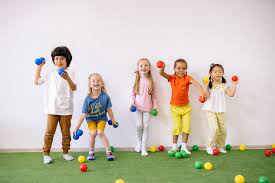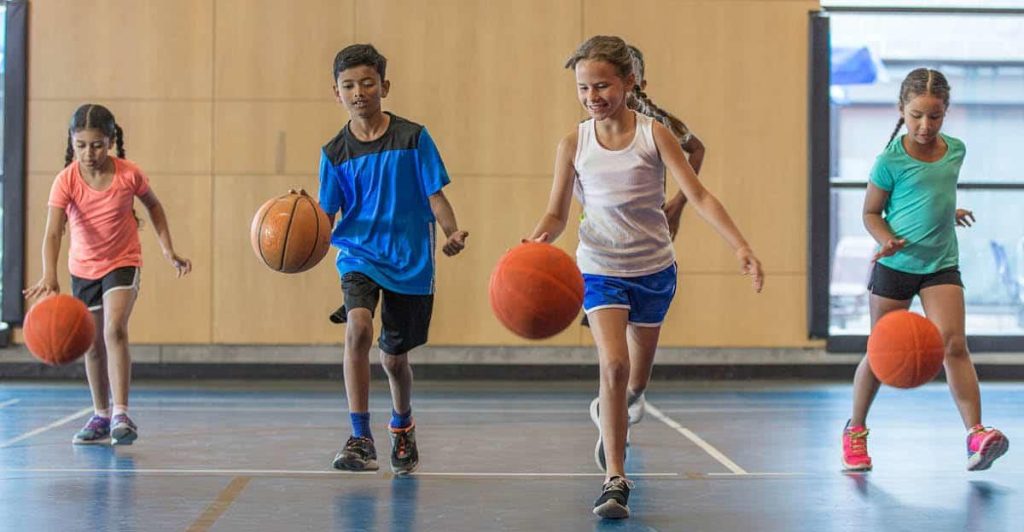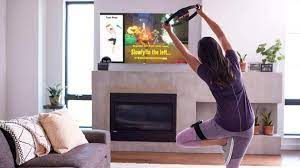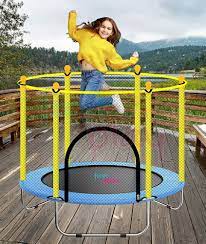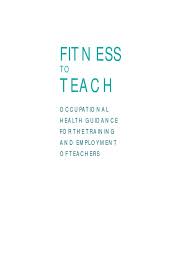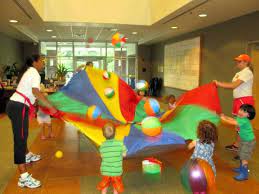Incorporating daily fitness activities into the classroom is an excellent way to keep students engaged, focused, and healthy. Physical activity doesn’t just benefit the body; it also stimulates the brain, making learning more effective. Here are 14 easy and fun fitness activities you can quickly integrate into your classroom routine:
1. Jumping Jacks Jubilee – Start with a set of jumping jacks to get the heart pumping. Increase or decrease the number based on age and fitness levels.
2. Desk Push-Ups – Have students do push-ups using their desks for support. This activity builds upper body strength without needing extra equipment.
3. Chair Squats – Students can stand up and sit down repeatedly from their chairs without completely sitting down to work their leg muscles.
4. Yoga Stretch – Introduce simple yoga poses to help with flexibility and balance, such as the tree pose or warrior pose.
5. Dance Break – Play a quick song and let the students freestyle dance around the classroom.
6. Hallway Races – Use the hallway for relay races or sprints to expend energy in a controlled environment.
7. Balloon Volleyball – Keep a balloon from hitting the ground by hitting it back and forth across the classroom.
8. Hula Hoop Contest – See who can hula hoop the longest or pass a hoop around in a circle without letting it touch the ground.
9. Mindful Breathing – Teach deep breathing exercises to calm down and refocus attention after high-energy activities.
10. Simon Says Fitness Edition – Play Simon Says but include actions like “do three jumping jacks” or “touch your toes.”
11. Stationary Bike or Pedal Desks – If available, use stationary bikes or pedal desks for children to cycle while reading or doing quiet work.
12. Rope Skipping Challenge – If space allows, practice skipping rope which is excellent for coordination and cardiovascular health.
13. Fitness Spell Out – Assign different exercises to each letter of the alphabet and spell out words with movements (e.g., B = burpees).
14. Silent Disco Stretching – Have students wear headphones playing various music while they follow a stretching routine silently.
Incorporating these simple fitness activities into everyday school life encourages both physical health and effective learning practices, all while keeping students active and entertained!
14 Quick Easy Fun Daily Fitness Activities
Incorporating fitness into your daily routine doesn’t have to be a chore. Instead, with some creativity and the willingness to have fun, staying active can become the best part of your day. Here are 14 quick, easy, and enjoyable activities that you can do daily to keep yourself fit and energized.
1. Dance Breaks: Put on your favorite tunes and dance around for ten minutes. It’s a great way to lift your spirits and get your heart pumping.
2. Stair Climbing: Opt for stairs instead of elevators or escalators. If you’re at home, take a few minutes to go up and down the stairs briskly.
3. Walking Meetings: If you have the chance, suggest having meetings while walking. It can increase creativity and gives you those crucial steps.
4. Jump Rope: A quick five-minute jump rope session is an intense cardiovascular workout that strengthens your muscles.
5. Desk Exercises: While at work, do some seated leg lifts or desk push-ups to keep you active even during sedentary activities.
6. Yoga Flow: Take a short break to stretch out with a few yoga poses that will help in keeping your muscles flexible and mind focused.
7. Park Play: Turn playground equipment into workout stations – swing from arm to arm on monkey bars or use benches for step-ups.
8. Fitness Videos: Find a quick online workout routine and crank it out during lunch or a break time.
9. Cycling Commute: If possible, replace driving with biking when heading to work or running errands.
10. Household Chores: Convert household chores into fitness activities – vigorous sweeping, mopping or vacuuming all count!
11. Pet Playtime: Playing with pets, such as fetch or tug of war, can be an engaging way for you both to get exercise.
12. Squats Challenge: Every time you make tea or coffee do 20 squats while waiting for it to brew.
13. Active TV Watching: Commit to do jumping jacks or sit-ups during commercial breaks when watching television.
14. Nature Hikes: Go for short hikes in nature near your area; it’s great for physical health and mental well-being.
By incorporating these activities into your everyday life, not only will you find yourself becoming fitter but also appreciating the joy in movement – making for a healthier, happier you!
How to Add Movement to Your Lessons This National Physical Fitness and Sports Month
With the arrival of National Physical Fitness and Sports Month, educators across the country are seeking innovative ways to incorporate more movement into their lessons. Movement doesn’t just promote physical health; it can enhance focus, memory, and cognitive function, making it a critical component for effective learning. Here are some creative strategies to get students moving throughout the school day:
1. Active Breaks: Build short, active breaks into your schedule. Have students stand up, stretch, or follow a quick exercise routine every 30 minutes to keep blood flowing and energy levels high.
2. Lesson-based Movement: Integrate physical activity into your lesson plans. For a math class, this could involve jumping jacks while counting or a scavenger hunt to solve problems placed around the room. For language arts, try vocabulary hopscotch or acting out stories.
3. Outdoor Learning: Whenever possible, take learning outside. The change of environment can be invigorating, and open space invites natural movement—whether it’s reading under a tree or conducting science experiments on the playground.
4. Movement-based Seating: Encourage fidgeting in a constructive way using seating options that allow movement, such as stability balls, wobble chairs, or standing desks.
5. Incorporate Technology: Use educational technology that requires physical interaction—like dance mats that double as input devices for answering quiz questions or virtual reality experiences that require body movements to navigate.
6. Classroom Layout: Arrange your classroom to encourage movement by creating clear pathways for students to walk through. Use stations around the room where students can rotate and engage in different activities.
7. Dance and Music: Incorporate dance and music related to your lesson content whenever appropriate. Music can set the pace for an activity and make repetitive tasks more enjoyable.
8. Sports as Teaching Tools: Use sports to teach concepts like statistics in math class or physics principles in science.
By consciously working to add these elements of kinetic learning into your curriculum during National Physical Fitness and Sports Month—and throughout the year—you’ll be promoting healthier habits and may even see an improvement in your students’ engagement and academic performance as they enjoy the many benefits of staying active during the school day.
These Next-Level P.E. Classes Look Super Fun (and Educational, Too)
Introduction:
Physical education (P.E.) classes have come a long way since the days of dodgeball and jump rope. Schools across the globe are now incorporating innovative and engaging activities into their curriculums, transforming the way students experience P.E. These next-level P.E. classes not only provide fun opportunities for students to stay active but also contribute to their overall educational experience.
1. Adventure Education
Adventure education focuses on team building, problem-solving, and decision-making through a variety of indoor and outdoor activities like ropes courses, wall climbing, and orienteering. These challenges help develop communication skills, boost self-confidence, and foster social connections amongst classmates.
2. Dance Fitness
From hip-hop to salsa, dance fitness classes introduce students to various styles of dance while promoting physical activity. Dancing not only improves flexibility, balance, and coordination but also aids in developing cultural awareness and appreciation for the arts.
3. Yoga and Mindfulness
Incorporating yoga and mindfulness practices into P.E. classes can help reduce stress levels and improve overall mental health for students. Techniques such as meditation, deep breathing exercises, and various yoga poses encourage relaxation and self-awareness while enhancing focus and concentration.
4. Sports Science
Sports science-based P.E. classes expose students to the biomechanics, nutrition, and physiology behind athletic performance. Activities like heart rate monitoring during physical exertion or analyzing dietary intake enable students to develop a better understanding of their own bodies while nurturing interest in sports-related fields.
5. Outdoor Education Programs
Outdoor education programs emphasize skill-building through nature-based activities such as orienteering courses, hiking trips, or rock climbing expeditions. These programs foster self-sufficiency, environmental stewardship, and an appreciation for the natural world outside of traditional classroom settings.
6. Aquatics Fitness
Aquatics fitness classes offer students an opportunity for low-impact, full-body workouts in water-based settings. Swimming lessons and aquatic activities like water polo or synchronized swimming cultivate water safety awareness while improving cardiovascular endurance and muscle strength.
7. Adaptive P.E. Classes
Recognizing diverse physical abilities, adaptive P.E. classes provide tailored instruction and modification to accommodate students with disabilities or special needs. These inclusive programs promote an accessible environment that encourages physical activity for everyone without judgment or stigma.
Conclusion:
With such an array of innovative and engaging next-level P.E. classes available, it’s clear the traditional perception of physical education is changing for the better. These new approaches not only make P.E. more enjoyable but also contribute to a well-rounded and comprehensive educational experience for students of all ages and abilities.
The Gym Equipment That Will Help You Next Level Your P.E. Class
Introduction
Physical Education (P.E.) classes play a vital role in promoting a healthy lifestyle and improving physical fitness in students. To ensure an engaging and effective P.E. class, it’s crucial to introduce a variety of gym equipment that caters to every student’s fitness level and interest. In this article, we will discuss the top gym equipment that can help take your P.E. class to the next level.
1. Resistance Bands
Resistance bands are versatile and cost-effective, making them an excellent addition to any P.E. class. They can improve strength, flexibility, and range of motion. Students can use resistance bands for warm-ups, cool-downs and as part of circuit training workouts.
2. Medicine Balls
Medicine balls come in various weights and sizes, offering a full-body workout for students of all ages. They are effective for building strength, improving coordination and balance, and incorporating cardiovascular exercises into your P.E. class.
3. Jump Ropes
Jumping rope is a simple yet efficient activity to develop cardiovascular endurance, speed, agility, and coordination among students. Jump ropes come in different materials, lengths, and thicknesses to accommodate varying skill levels.
4. Hula Hoops
Hula hooping is not just a fun activity; it’s also an excellent way for students to improve balance, core strength and stability in their bodies. Incorporating hula hoop challenges or relay races promotes teamwork and competition while keeping students engaged throughout the entire P.E. class.
5. Kettlebells
Kettlebells help develop functional strength and power in a fun and challenging way for students when incorporated into strength-training circuits or multi-modal exercises like swings, squats, or deadlifts.
6. Agility Ladders
Agility ladders are perfect tools for teaching quick footwork and improving speed while focusing on coordination and spatial awareness. They are especially useful for warm-ups, cool-downs, or incorporating into a larger obstacle course.
7. Yoga Mats
Yoga mats are an excellent addition to P.E. classes as they provide a comfortable surface for students to perform bodyweight exercises, stretching, and relaxation techniques. Yoga helps increase flexibility, improve posture and balance, and promote mental well-being.
8. Balance Boards
Balance boards challenge students by targeting their core muscles and improving coordination and stability. They are versatile enough to be used in various exercises and games, letting your students explore their creativity while engaging their physical abilities.
Conclusion
By incorporating diverse gym equipment into your P.E. class, you can encourage students to develop various physical skills and foster a lifelong interest in fitness and health. The equipment listed above will not only make your P.E. classes more engaging but also ensure a well-rounded workout experience for all students, helping them reach new levels of physical achievement.
Computer games to encourage fitness
Introduction:
Computer games have long been criticized for promoting sedentary lifestyles, but the gaming industry has taken a new turn in recent years, changing this perception. With the development of games focused on encouraging fitness and healthier habits, players are now motivated to become more active. This article explores some of the most popular computer and video games that promote exercise and fitness.
1. Wii Fit (Nintendo):
Wii Fit revolutionized the concept of integrating fitness with gaming by using motion-sensor technology. It comes with a balance board that reads player movements to monitor their exercises and in-game performance, providing immediate feedback. The game offers various exercise routines, yoga poses, and strength training exercises for players to follow.
2. Dance Dance Revolution (Konami):
This arcade dance rhythm game has successfully made its way into home consoles, getting people moving on the dance mat. Dance Dance Revolution requires players to follow on-screen prompts and step on corresponding arrows on the mat in sync with the music. This energetic game improves cardiovascular endurance, coordination, and agility.
3. Just Dance (Ubisoft):
Another popular dance game that can be played on various platforms is Just Dance. Players follow an on-screen avatar that follows a choreographed routine set to different songs from diverse genres. Gamers are scored for accuracy and energy, motivating them to continuously improve their performance.
4. Fitness Boxing (Nintendo):
Fitness Boxing incorporates boxing-inspired workouts into a rhythm-based game. Players punch using the Joy-Con controllers while following an on-screen trainer who guides them through different moves, such as jabs, hooks, uppercuts, and dodges. Not only does it help build strength and endurance, but it is also an excellent stress-reliever.
5. Ingress / Pokémon Go (Niantic):
These location-based AR games encourage players to explore their surroundings by utilizing GPS technology to find virtual objects or creatures. Ingress focuses on players capturing virtual ‘portals,’ while Pokémon Go has users searching for and capturing iconic Pokémon characters. Both games contribute to increased physical activity, walking, and outdoor exploration.
6. Ring Fit Adventure (Nintendo):
A recent addition to fitness-based games, Ring Fit Adventure, combines RPG gameplay with exercise routines. It comes with a Ring-Con controller and leg strap to monitor players’ actions as they follow the in-game fitness exercises to advance through levels and defeat the enemies.
Conclusion:
Computer games no longer have to be considered detrimental to fitness. Thanks to these innovative titles, players can now engage in fun activities that promote exercise and healthier lifestyles. By integrating physical movement with entertaining gameplay mechanics, these games offer a more enjoyable alternative to traditional exercise methods while still delivering tangible benefits for one’s health and well-being.
7 Best Kid Trampoline
Introduction
Trampolining is a fantastic activity for kids to enjoy hours of fun while benefiting from physical exercise at the same time. A kid trampoline can help develop motor skills, improve balance, and strengthen muscles while providing a thrilling experience. So, without further ado, let’s explore the 7 best trampolines for kids available in the market.
1. Skywalker Trampolines Mini Bouncer with Enclosure
The Skywalker Mini Bouncer is perfect for kids aged 3-7 years old, with a weight limit of 100 lbs. This trampoline has a durable construction that features a patented no-gap design. The enclosure system prevents any contact with springs, ensuring maximum safety and protection.
2. Little Tikes 3′ Trampoline
This indoor trampoline by Little Tikes is suitable for kids aged 3-6 years old, with a weight limit of 55 lbs. With a 3-foot diameter, this compact model is perfect for providing hours of bouncing fun in smaller spaces. The handlebar offers additional support and stability for young jumpers.
3. My First Trampoline by Bounce Pro
With an enclosure and padded poles for extra protection, My First Trampoline is designed specifically for young children aged 3-10 years old. It has a weight capacity of 100 lbs and incorporates a stable base to prevent tipping while jumping.
4. HearthSong Jump2It Kids Portable Mini Trampoline
The HearthSong Jump2It Portable Mini Trampoline offers a unique two-person jumping experience, encouraging social play alongside physical activity. With an adjustable central handlebar and sturdy construction, it accommodates kids aged 3 years and up with a combined weight capacity of 180 lbs.
5. Sportspower My First Inflatable Water Trampoline
This inflatable water trampoline adds an exciting twist to the classic bouncing experience. With an integrated splash zone, kids aged 3-8 years can have a blast bouncing and splashing on those hot summer days. It includes a safety enclosure and a built-in sprinkler system, ensuring the ultimate water fun.
6. Pure Fun Super Jumper Kids Trampoline
The Pure Fun Super Jumper is an ideal option for kids from 3 to 10 years old, with a weight limit of 100 lbs. This trampoline features a galvanized steel frame, UV-resistant jump mat, padded spring cover, and an easy-to-assemble design. A padded T-bar provides additional support and security.
7. Galt Folding Trampoline
Galt’s folding trampoline is perfect for portability and convenient storage. Suitable for kids aged 3-7 years old, it has a weight capacity of 77 lbs. The trampoline features an easy grip handle and padded cover for safety during playtime.
Conclusion
When selecting the best kid trampoline, consider factors such as safety features, age range, weight limit, and available space for setup. With our list of top 7 trampolines for kids, you’re sure to find the perfect addition to your family’s playtime arsenal that promotes both fun and fitness. Happy bouncing!
“Fitness to Teach”: A Guide to the Law for Education Providers
Introduction
As education providers, ensuring the quality and professionalism of teaching staff is an essential responsibility. One important aspect of this duty is assessing the fitness to teach of employees as it reflects on the safety and well-being of students as well as the institution’s reputation. This article aims to provide a clear understanding of the term ‘fitness to teach’ and offers a comprehensive guide that outlines legal requirements and considerations for education providers.
Understanding “Fitness to Teach”
Fitness to teach refers to a measure of a teacher’s professional and personal suitability for their role in educating children or young people. The concept encompasses various criteria including qualification, competence, and character. The primary focus is on maintaining standards and values that guarantee safe learning environments for students while upholding teaching quality for successful educational outcomes.
Legal Requirements
Education providers must adhere to specific laws and regulations when employing teachers or assessing their fitness to teach. The following legal frameworks govern hiring practices, conduct, capability, and disciplinary issues involving teachers:
1. The Education (School Teachers’ Qualifications) Regulations: These regulations outline minimum academic requirements for qualified teacher status (QTS), which is a prerequisite for those teaching in public schools.
2. The Independent School Standards: Both independent schools and non-maintained special schools must comply with these standards, which require appropriate checks on teachers’ qualifications, health, and suitability before employment.
3. General Teaching Council (GTC) Codes: In jurisdictions with active GTCs, education providers should observe professional standards set by the GTC Codes outlining conduct expectations.
Assessing Fitness to Teach
Education providers should establish robust procedures when determining a prospective or current teacher’s fitness for their role. Considerations in assessing fitness include:
1. Qualifications: Ensuring the teacher possesses relevant academic qualifications or QTS necessary for their position.
2. Disclosure & Barring Service (DBS) checks: Carrying out thorough background checks to identify any criminal convictions or related matters, which could influence the teacher’s fitness to teach.
3. Health: Verifying mental and physical health status that would not interfere with the teacher’s ability to perform their job effectively or compromise students’ safety.
4. Professional Competence: Ensuring teachers demonstrate appropriate teaching skills, knowledge, and experience, with ongoing professional development to continuously improve practice.
5. Character: Evaluating a teacher’s character based on past experiences, integrity, professionalism, and attitude towards responsibilities.
6. References: Collecting reliable references from previous employers verifying competencies, skills, and attitudes demonstrated in similar roles.
Addressing Unfitness – Procedures and Interventions
In cases where a teacher’s fitness may be questionable or compromised before or during employment, education providers should implement transparent processes in line with developmental and disciplinary policies. These steps may involve:
1. Performance management strategies for teachers facing competence-related issues.
2. Professional development programs designed to strengthen teaching skills.
3. Occupational health and medical interventions for teachers struggling with health-related issues.
4. Disciplinary action in cases of serious breaches related to professional conduct or character.
Conclusion
Education providers must prioritize maintaining standards of fitness amongst teaching staff for the benefit of all parties—and that begins by understanding the legal frameworks governing fitness to teach. Regularly evaluating the suitability of teaching staff ensures not only the safeguarding of students but also demonstrates a commitment to upholding educational quality and institutional integrity.
25 Bouncy Indoor and Outdoor Beach Ball Games for Kids!
1. Beach Ball Relay Race: Divide the kids into teams and have them race to pass the beach ball to their teammates, only using their heads.
2. Beach Ball Toss: Have the kids stand in a circle and toss the beach ball to each other, trying not to let it touch the ground.
3. Beach Ball Soccer: Set up a soccer field outdoors and play soccer with the beach ball.
4. Beach Ball Volleyball: Play an exciting game of volleyball using the beach ball instead of a traditional volleyball.
5. Beach Ball Obstacle Course: Create an obstacle course where kids need to navigate with the beach ball balanced on a pool noodle or a spoon.
6. Hot Beach Ball: Play musical chairs with the kids, passing around the beach ball until the music stops.
7. Beach Ball Crab Crawl: Make kids crawl like crabs while balancing beach balls on their stomachs.
8. Beach Ball Basketball: Use a hula hoop or a large bin as the basketball hoop and let kids score points by shooting the beach ball into it.
9. Target Toss: Set up various targets on an open space, then have children toss their beach balls at them for points.
10. Balloon Paddle Ball: Attach a paddle to each player’s hand and challenge them to hit the beach ball back and forth without letting it touch the ground.
11. Human Ring Toss: Encourage kids to be the ring toss poles by holding their arms out horizontally while others try to toss their beach balls onto them.
12. Beach Ball Bowling: Set up some empty soda bottles as pins, then let children roll their beach balls at them in a game of Bowling.
13. Keep Away: In pairs, players aim to move a defined distance while keeping the ball away from each other using only feet or head.
14. Beach Ball Parachute: Kids stand in a circle, holding a parachute and toss the beach ball on it. They bounce the ball up-and-down by moving the parachute.
15. Dizzy Relay Race: Have kids spin around a set number of times while balancing the beach ball on their head before racing to the other team’s side.
16. Water Balloon Beach Ball: Replace traditional water balloons with beach balls for a splashing fun variation of water balloon battles.
17. Beach Ball Hockey: Set up a mini hockey rink and play hockey, using pool noodles as sticks and beach balls as pucks.
18. Musical Beach Balls: Scatter multiple beach balls and let kids bounce them to the rhythm of music, pausing when the music stops.
19. Simon Says with a Twist: Play Simon Says, but incorporate actions such as “Simon says toss your beach ball up” or “Simon says hold the beach ball between your legs.”
20. Beach Ball Balance Beam: Kids walk across a balance beam while holding onto a beach ball between their knees.
21. Tag with a Twist: Play a game of tag where the person who is “it” must hold onto a large beach ball while trying to tag others.
22. Catch and Shoot: Have kids throw and catch their own beach balls while they continually move towards an empty goal or basket until they get close enough to shoot.
23. Beach Ball Tear Down: Have kids stand back-to-back in pairs, then try to bring down their opponents by pushing their backs using only the force from their beach balls.
24. Floating Island Hopping: Arrange floating boards or mats randomly in shallow water, then have children jump from one floating surface to another while holding their beach ball.
25. Team Sand Sculptures: Break kids into groups and have them work together to create fantastical sand sculptures.
A Healthy Education Puts Literacy First
For all the quibbling done about teaching more relevant skills (STEM is the go-to for this rhetoric) and better preparing students for productive careers and to compete on a global scale, America’s schools have done a disservice to the kinds of knowledge and skills whose value is unconditional, insulated from technological disruption, and intrinsic to success in all areas.
We talk about education as being critical to our economy, from filling the jobs of the future, supporting innovation, and even helping workers to pivot in their careers to keep up with change and keep the country competitive. Well, education is also important to the health of our country, and healthcare happens to be one of the biggest single drains on our national economy, in terms of both productivity and absolute cost.
If we are going to look to education for jobs, skills, and economic strength, it stands to reason that we’d also look to education for tackling the health challenges in our country as well.
Health literacy
One of the best predictors of academic success, is whether a student is encouraged to read–or, better yet, read to as a child–by his or her parents outside of school. Basically, this amounts to whether parents support literacy. In a sense, then, literacy can become cyclical: parents of active readers are, or become, active readers themselves; children of active readers are more likely to become active readers themselves, and to, in turn, encourage reading in their own children.
But basic literacy is no longer limited to reading and writing. Depending on who you talk to, everything from digital literacy to basic coding should be treated as equally essential–usually because of the economic impact such fundamental skills can make over time.
Health literacy needs a similar imperative, because as it turns out, health literacy correlates strongly with better health behaviors, more effective health treatment (when you understand your doctor’s orders, you are both more able and more likely to comply). Health, of course, underpins success elsewhere in life: careers, relationships, creativity, academics–all of the things, in short, we hope to gain from education.
Bad Medicine
Diet is but one component of this, but it is perhaps the easiest to blend practice with theory, considering the need for students to eat at least one meal over the course of their primary school day.
Hospitals and schools face a similar challenge: feeding students (or patients) well, and teaching them to feed themselves better at the same time. The cafeteria model that has gained such widespread adoption over the last century produces some serious externalities that, long-term, undermine any claims about the efficiency of such food service systems. Namely, prioritizing volume over value, and thereby reinforcing negative habits and attitudes about food: convenience first, fried and packaged rather than fresh, salt and sugar rather than balanced.
Putting health literacy on the menu, as well as in the classroom (or the examination room, where hospitals are concerned) can help undo these damaging trends. More than that, though, health literacy balances the role of authority–like doctors and nurses–with the role of individuals (take care of yourself proactively, rather than looking to get fixed reactively; don’t wait for government restrictions to improve your grocery list). Literacy itself teaches personal accountability: you learn to read and write for yourself, and to think and interpret critically.
Health literacy promises something similar, applied to the life skills of self-care and taking responsibility for each individual’s role in supporting population health.
Getting Physical
Balance is missing from our population, as well as from our schools. P.E. classes, like lunchrooms, could stand to reintegrate some balance to help repair our culture starting with the youth.
In other academic models, gamification is the latest buzzword to gain traction with its premise, essentially, of making learning engaging and fun. Physical education–training students to exercise, be active, and care for their bodies–seems a lot like the original model of gamification, but we’ve let the games overwhelm the lessons, and the competition dissolve the core value. We have a cultural problem when it comes to staying active.
Sports anchored to schools have more than their share of problems, and the association has grown beyond unhealthy. It is entirely possible that the professionalization of sports at all ages, and the pressure on children to specialize athletically at younger and younger ages, is partially responsible for the failure of physical education programs in the U.S. The intensity of the competition, and the emphasis on talent and relative skill over the intrinsic value of participation may well put kids off of sports, and by extension, exercise. It encourages kids of all ages to take unnecessary risks, “play through the pain” and even take drugs to gain a competitive edge.
Adopting the “everybody gets a trophy” approach is not helping. Physical fitness–and physical education–are the counterparts to the sort of health literacy training that can take place in the cafeteria. Again, the model of parents reading at home may be instructive. When participation in exercise of any form is reflected at home and at school, the focus can return to where it belongs: personal health and wellness.
Reading together promotes learning as well as fostering community. So, too, does eating together. There is no reason why athletics cannot provide a similar model for behavior as an individual as well as a group member.
Literacy underpins communication and helps us advance as individuals and collectively. Health literacy can do the same for our collective health and cultural approach to wellness by means of what we eat and how we care for ourselves.
